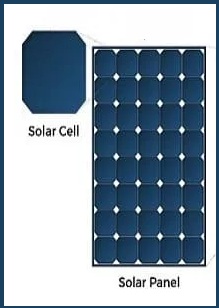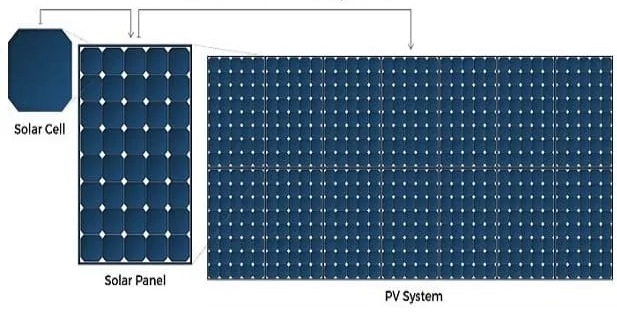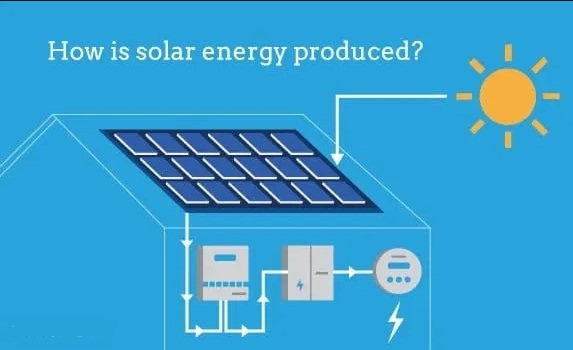The difference Between Solar Cell and Solar panel is that solar panel consist of numerous solar cells. So we can say that the solar cell is part of the solar panel.
The main difference between solar panels and solar cells is that solar cells take in solar energy directly from sunlight and convert it into electricity, and solar panels collect the output current from all solar cells and send it to inverters.
A solar cell is a single device while solar panels are the combinations of lots of solar cells.

Now we know the difference between a solar cell and a solar panel.
Let’s study solar cells and solar panels.
Table of Contents
What Is a Solar Cell?
Solar cells are also known as photovoltaic (PV) cells. Photovoltaic (PV) cells are electronic components of the solar system that generate electricity when exposed to sunlight particles or photons. Single crystals and polycrystals are used in the manufacture of solar cells. In most cases, these cells have multiple layers with two semiconductors in between. Of these two semiconductors, one is mounted at the top and the other at the bottom. The upper semiconductor has extra electrons that generate a negative charge. However, the lower semiconductor has no electrons and is a positive electrode layer.
When sunlight hits the upper semiconductor, loose electrons are emitted to the lower cathode layer. Since semiconductors allow electrons to enter cells, there is a barrier between the positive and negative plates. Therefore, when loose electrons are forced to reach the underlying semiconductor, an electric current is generated. Next, the conductor carries the resulting current to the power consumer. This process is repeated when the electron re-enters the cell. This is one of the easiest ways to generate electricity to your liking.
What Is a Solar Panel?
Solar cells are also known as photovoltaic (PV) cells. Photovoltaic (PV) cells are electronic components of the solar system that generate electricity when exposed to sunlight particles or photons. A photovoltaic (PV) module, or solar panel, is a solar cell assembly mounted on a mounting frame. Simply put, installing multiple solar cells in one frame is called a solar panel. Since a single solar cell can only generate a limited amount of power, a solar cell panel consists of a solar cell module or a series of parallel circuits of solar cells that form a solar cell module.
The PV module protects the solar cells from the elements by placing the solar cells and wiring in a protective box. These modules are then assembled into solar panels. Solar panels amplify, protect and conduct the energy of individual solar panels. The number of solar panel modules depends on the desired coverage area or load. The number of cells in a panel depends on the brand type and the panel size selected, but the maximum panel is 60 or 72 cells.
To understand better I have shown the image of the photovoltaic module. This PV system consists of various solar panels.

An Overview of Solar System
A system that extracts energy from sunlight to generate electricity is called a solar system. There are several solar cells and solar panels. Solar modules and solar cells work together to generate electricity according to needs. The solar cells are installed inside the solar panel, and each part plays a specific role in a larger system called a solar system or a photovoltaic system. All parts of the solar system work efficiently to generate electricity.

In this system, all solar cells are arranged to absorb sunlight and convert it into electricity. Since solar panels absorb electricity from all solar cells, this collected electricity is supplied to the inverter, which converts direct current into alternating current. This AC (alternating current) is sent to your home or office via a meter.
